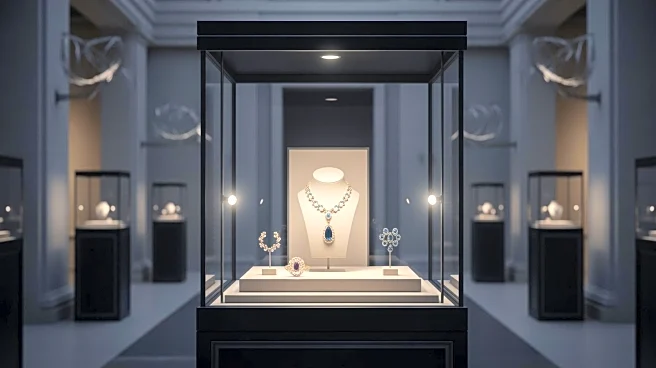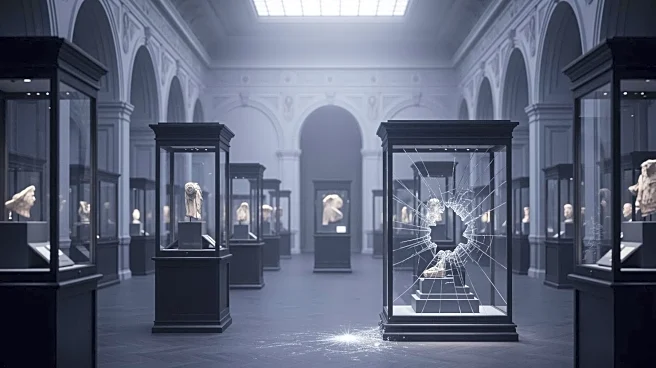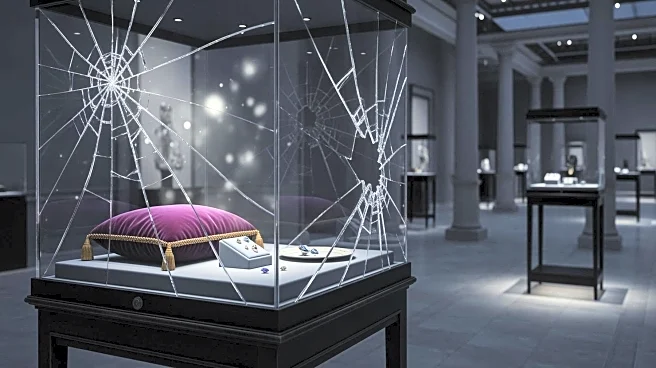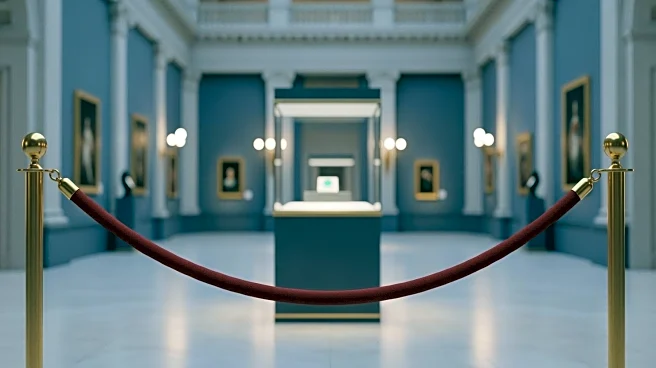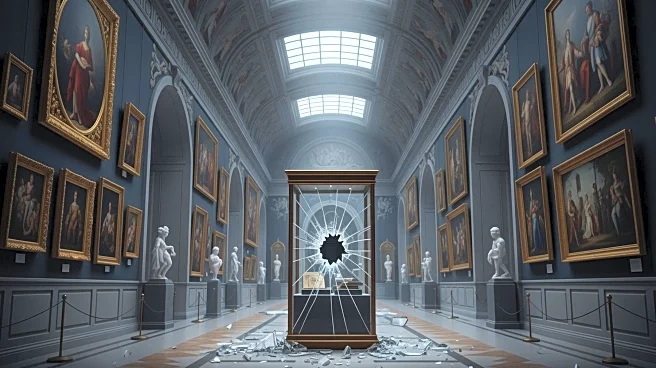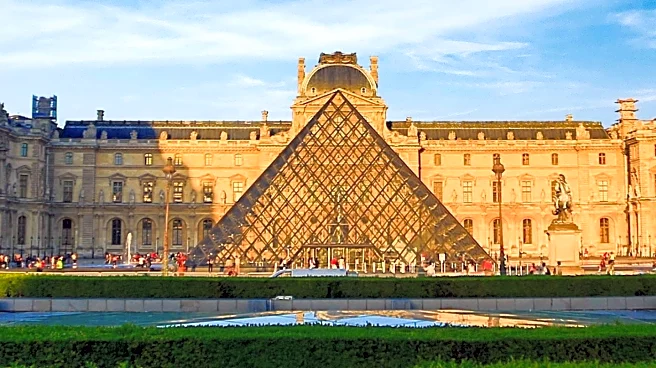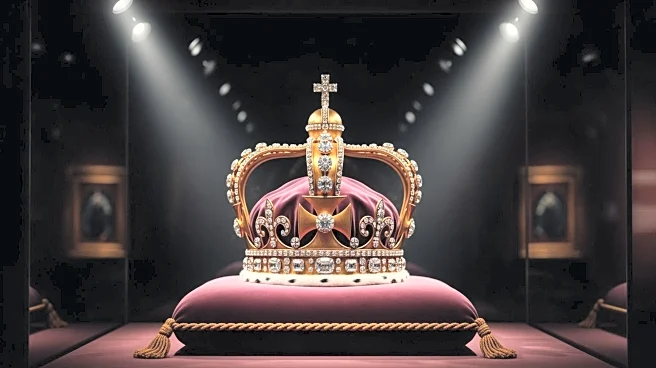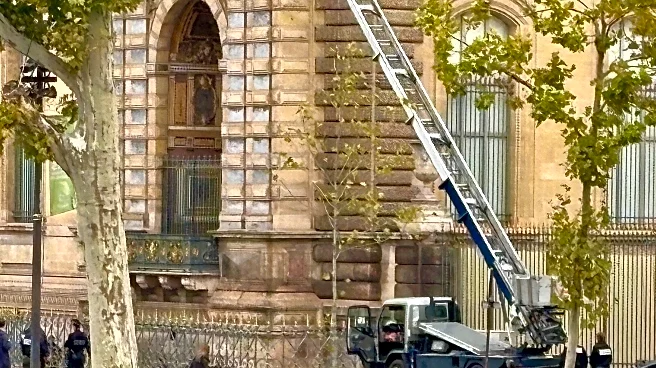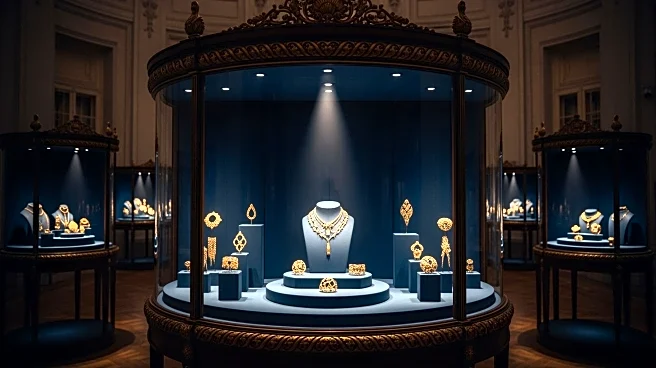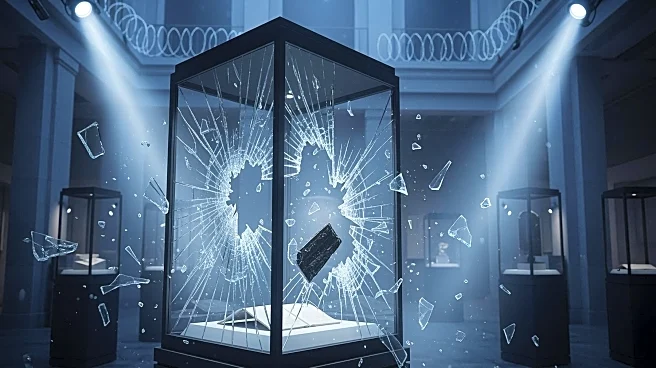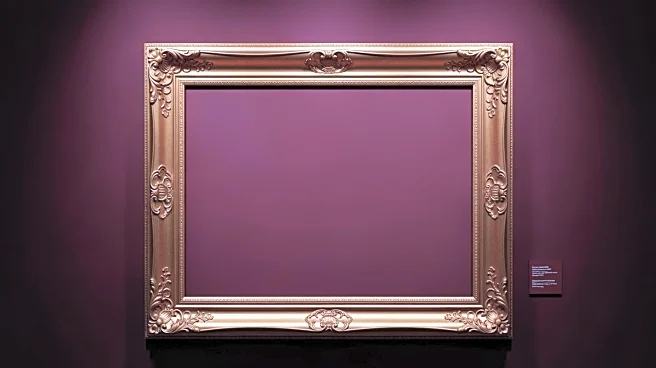What's Happening?
Thieves executed a daring heist at the Louvre Museum in Paris, stealing jewelry of immense historical and cultural value. The incident occurred on October 19, 2025, when the museum was open to the public.
The intruders used a basket lift to access the museum, broke into the Galerie d'Apollon, and smashed display cases to seize nine pieces of jewelry, including items from the collection of Napoleon and the Empress. The heist lasted only seven minutes, and the thieves made their escape on motorcycles. One of the stolen jewels, believed to be Empress Eugénie's crown, was later found damaged outside the museum. The Louvre was closed for the day as authorities began their investigation, and a detailed inventory of the stolen items is being compiled.
Why It's Important?
This heist highlights significant security challenges faced by major cultural institutions. The theft of such valuable items not only represents a substantial financial loss but also a cultural one, as these artifacts hold inestimable historical significance. The incident underscores the vulnerabilities in museum security, particularly in high-traffic tourist destinations like the Louvre. It also raises questions about the adequacy of current security measures and staffing levels, which have been points of contention in the past. The theft could prompt a reevaluation of security protocols and potentially lead to increased funding and resources to protect cultural heritage sites.
What's Next?
Authorities are conducting a thorough investigation to recover the stolen items and apprehend the perpetrators. The French Culture and Interior Ministers are collaborating with the museum's management and law enforcement to address the security breach. The incident may lead to heightened security measures at the Louvre and other museums, including potential technological upgrades and increased staffing. The outcome of the investigation could influence future policies on museum security and cultural heritage protection.
Beyond the Headlines
The heist at the Louvre is part of a broader trend of high-profile museum thefts in Europe, reflecting a growing black market for stolen art and artifacts. This incident may prompt international cooperation to combat art theft and improve security standards across cultural institutions. Additionally, it raises ethical questions about the preservation and protection of cultural heritage in the face of increasing commercialization and tourism pressures.
